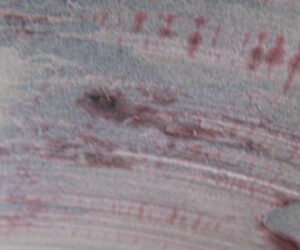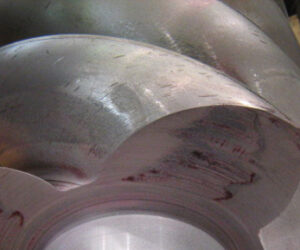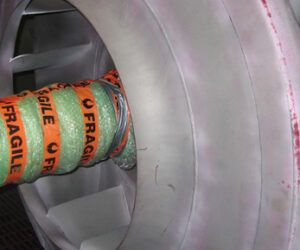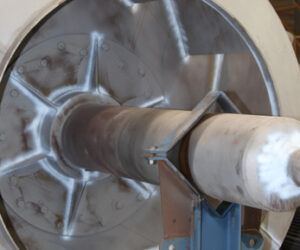Non-destructive testing (NDT) is the process of inspecting, testing or evaluating materials components or assemblies for discontinuities, or differences in characteristics without destroying the serviceability of the part or system. In other words, it is an inspection or test to ensure materials can used in the future.
In contrast to NDT, other tests are destructive in nature and are therefore done on a limited number of samples (“lot sampling”), rather than on the materials, components or assemblies actually being put into service.
These destructive tests are often used to determine the physical properties of materials such as impact resistance, ductility, yield and ultimate tensile strength, fracture toughness and fatigue strength, but discontinuities and differences in material characteristics are more effectively found by NDT.
Today, modern non-destructive tests are used in manufacturing, fabrication and in-service inspections to ensure product integrity and reliability, to control manufacturing processes, lower production costs and to maintain a uniform quality level.
During manufacture, NDT is used to ensure the quality of materials and joining processes during the fabrication and erection phases, and in-service NDT inspections are used to ensure that the products in use continue to have the integrity necessary to ensure their usefulness and the safety of the public.
VEEM utilises three main types of NDT. Our three types of Non-Destructive Testing include:
- Dye Penetrant
- Penetrant testing can be performed on magnetic and non-magnetic materials but does not work well on porous materials. Penetrants may be visible, meaning they can be seen in ambient light or fluorescent, requiring the use of a black light.
- Magnetic Particle
- Magnetic particle testing uses one or more magnetic fields to locate surface and near-surface discontinuities in ferromagnetic materials. The magnetic field can be applied with a permanent magnet or an electromagnet.
- Ultrasonic Testing
- Ultrasonic testing uses the same principle as the process used in naval SONAR and fish finders.
Ultra-high frequency sound is introduced into the part being inspected and if the sound hits a material with a different acoustic impedance (density and acoustic velocity), some of the sound will reflect back to the sending unit and can be presented on a visual display.
- Ultrasonic testing uses the same principle as the process used in naval SONAR and fish finders.
To provide integrated production VEEM has NDT facilities which encompasses the National Association of Testing Authorities (NATA) qualified Non Destructive Testing services in the fields of Dye Penetrant Testing, Magnetic Particle inspection and Ultrasonic testing.






